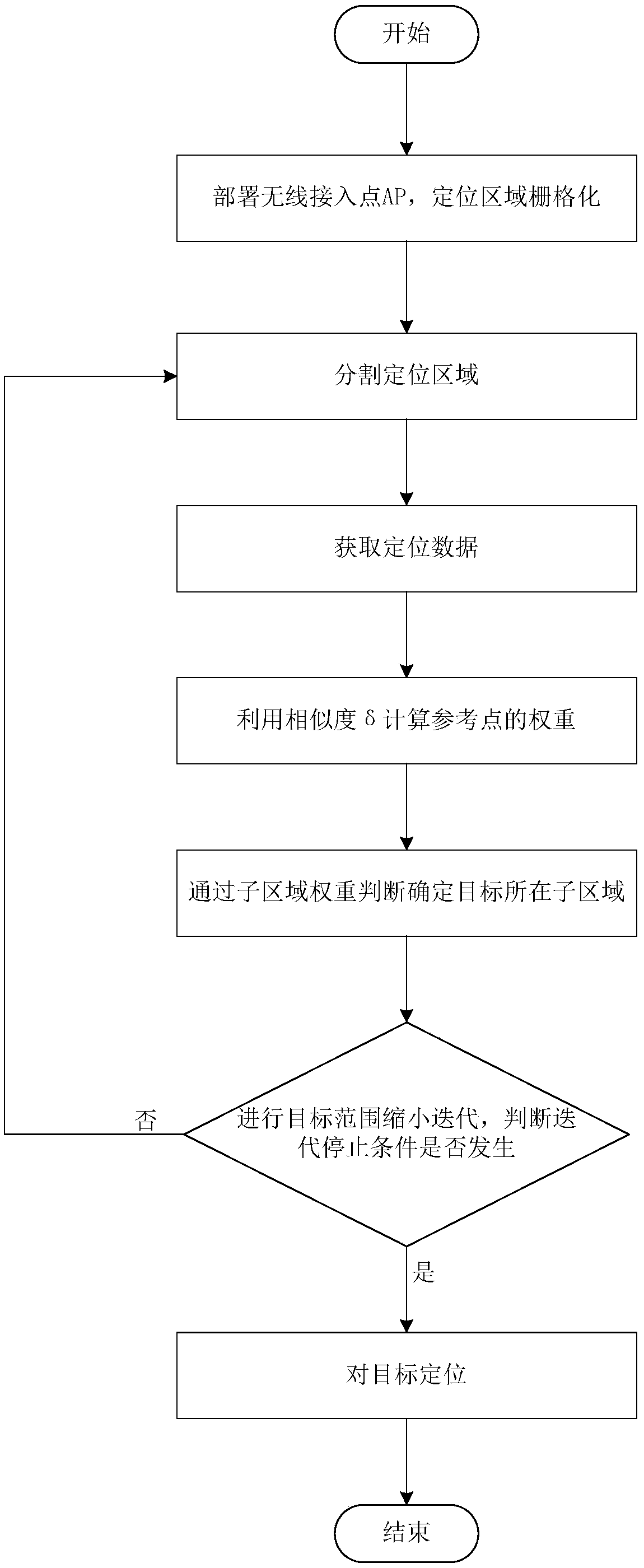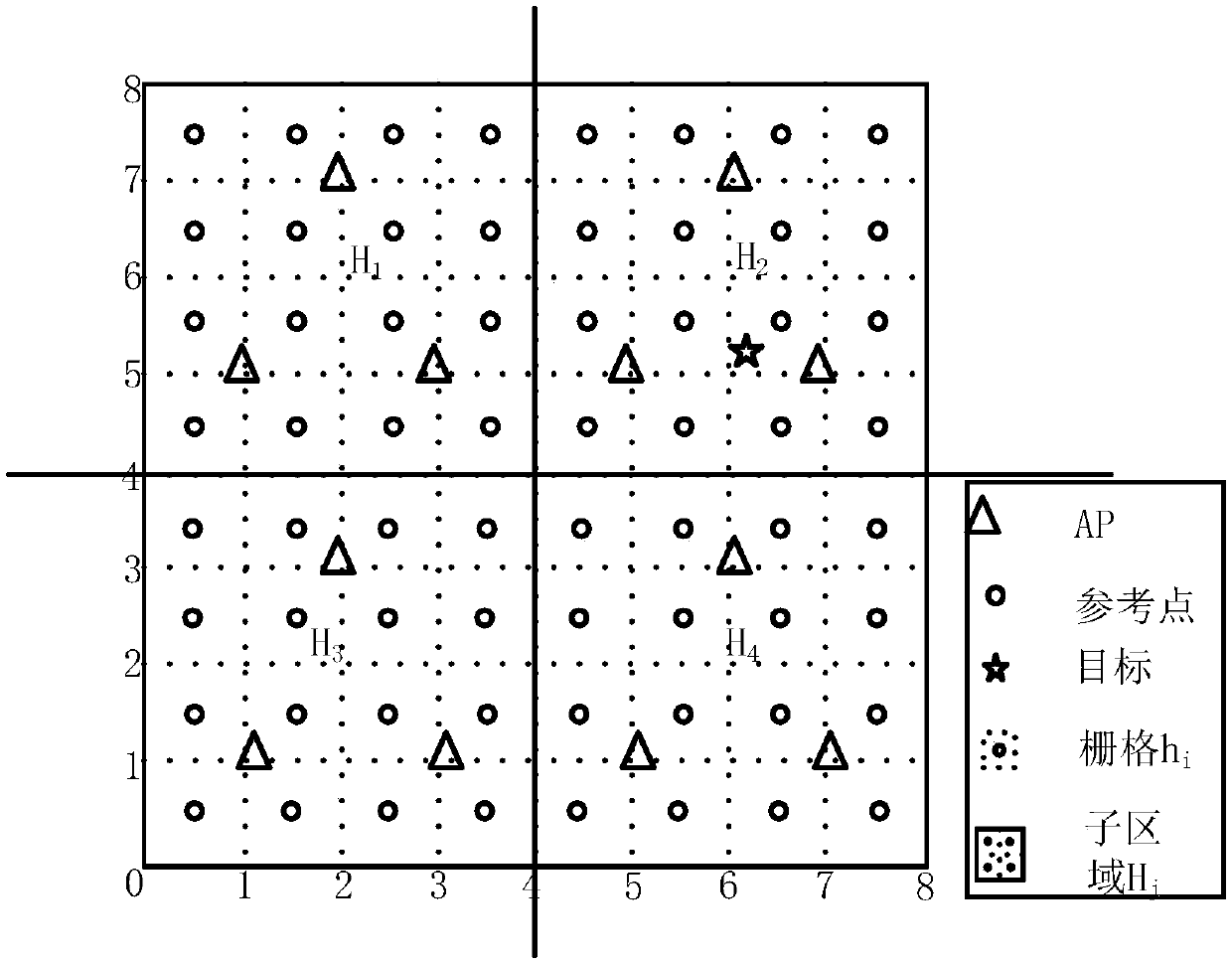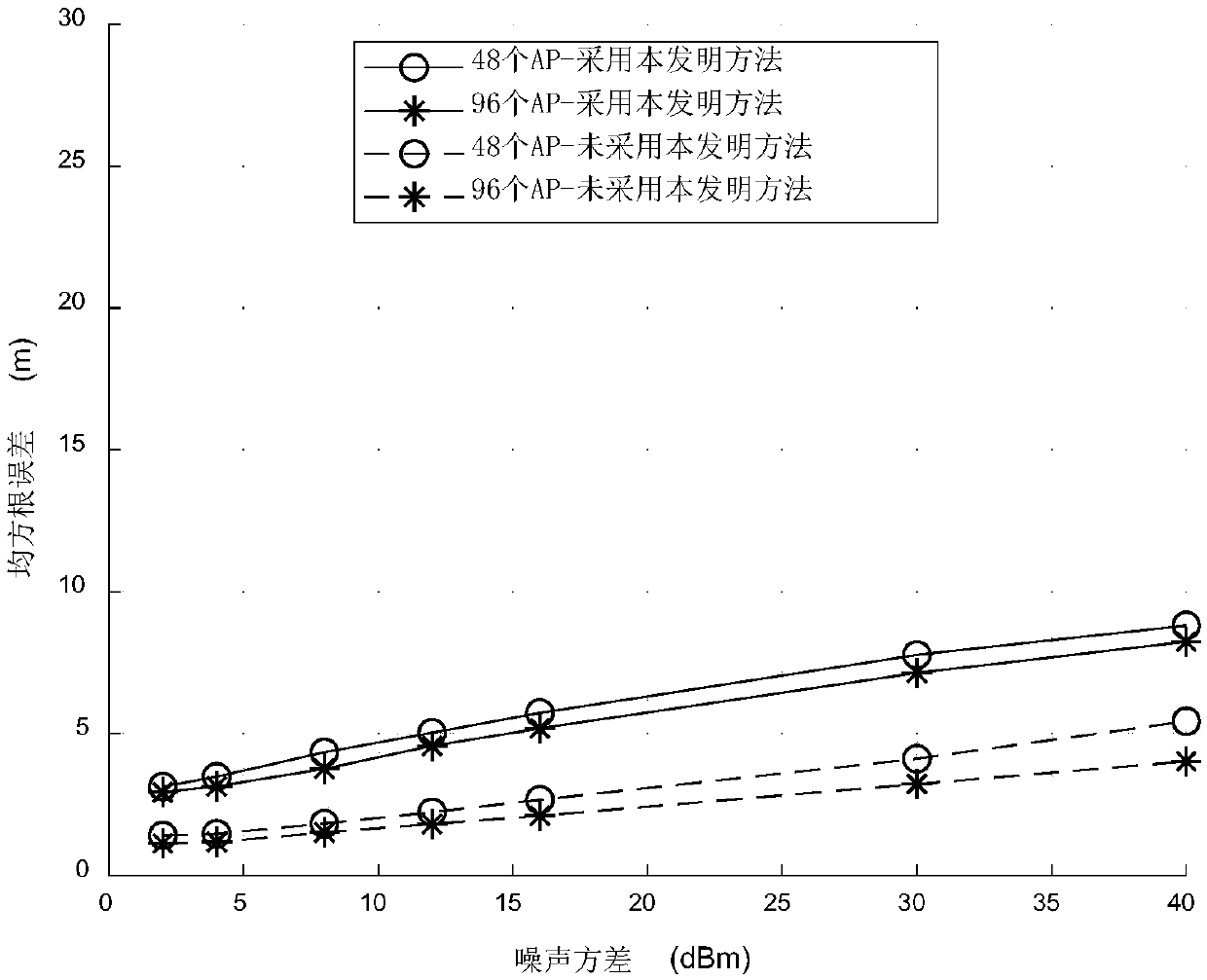WiFi indoor location method based on iterative partition space method
An indoor positioning and iterative segmentation technology, applied in the field of communication, can solve problems such as poor anti-noise performance, increase the complexity of the positioning system and the cost of system maintenance, and achieve the goal of improving anti-noise performance, reducing system maintenance costs, and improving robustness Effect
- Summary
- Abstract
- Description
- Claims
- Application Information
AI Technical Summary
Problems solved by technology
Method used
Image
Examples
Embodiment 1
[0025] The overall complexity of the Wi-Fi indoor positioning method based on location fingerprint identification and the high cost of system maintenance, and the Wi-Fi indoor positioning method based on the wireless signal propagation model are not suitable for environments with frequent changes. Therefore, the present invention also conducts research, and proposes a Wi-Fi indoor positioning method based on an iterative segmentation space method.
[0026] refer to figure 1 , the implementation steps of the present invention are as follows:
[0027] 1) Deploy the wireless access point AP and grid the positioning area:
[0028] see figure 2 , to deploy APs, the present invention requires that the distribution of APs in each sub-area is the same at each iteration, all APs are not located on the same straight line, and there are at least 3 APs in each sub-area, and the total number of APs is n·4 T , T is the maximum number of iterations that can be performed, the distribution...
Embodiment 2
[0043] The Wi-Fi indoor positioning method based on the iterative segmentation space method is the same as that in Embodiment 1, and step 3) of the present invention is used to obtain positioning data using a wireless signal propagation model to calculate the RSSI from each AP to each reference point under noise-free conditions and obtain each AP. To locate the RSSI of the target, proceed in the following two steps:
[0044] 3a). Calculate the RSSI from each AP to each reference point using the following wireless signal propagation model:
[0045]
[0046]
[0047] (1) In the formula, i is the serial number of the grid, l is the serial number of the AP; p il is in grid h i The AP received at the reference point of l The power of the signal; p l is AP l The signal transmission power, generally 0 ~ 17dBm; k l is AP l A constant coefficient of , which depends on the antenna characteristics and the average channel loss; d il for AP l with grid h i The distance betwe...
Embodiment 3
[0054] The Wi-Fi indoor positioning method based on the iterative segmentation space method is the same as embodiment 1-2, and the weight of the reference point is calculated by using the similarity δ described in step 4) of the present invention, as follows:
[0055] 4a). Select APs in the candidate location area and each reference point in the candidate location area.
[0056] 4b). Select the δ that meets certain principles (t) Calculate the weight of reference points in the candidate positioning area: at the tth iteration, judge the AP in the candidate positioning area received by the target l The signal strength of s l and each grid h in the candidate positioning area i The reference point received by the AP l signal strength p il Whether it meets the similarity requirement|s l -p il |≤δ (t) , t is the iteration order, t=1,2,3...; if satisfied, then is 1; if not satisfied, is 0; Represents the grid h at the tth iteration i AP is received at the reference poin...
PUM
 Login to View More
Login to View More Abstract
Description
Claims
Application Information
 Login to View More
Login to View More - R&D
- Intellectual Property
- Life Sciences
- Materials
- Tech Scout
- Unparalleled Data Quality
- Higher Quality Content
- 60% Fewer Hallucinations
Browse by: Latest US Patents, China's latest patents, Technical Efficacy Thesaurus, Application Domain, Technology Topic, Popular Technical Reports.
© 2025 PatSnap. All rights reserved.Legal|Privacy policy|Modern Slavery Act Transparency Statement|Sitemap|About US| Contact US: help@patsnap.com



